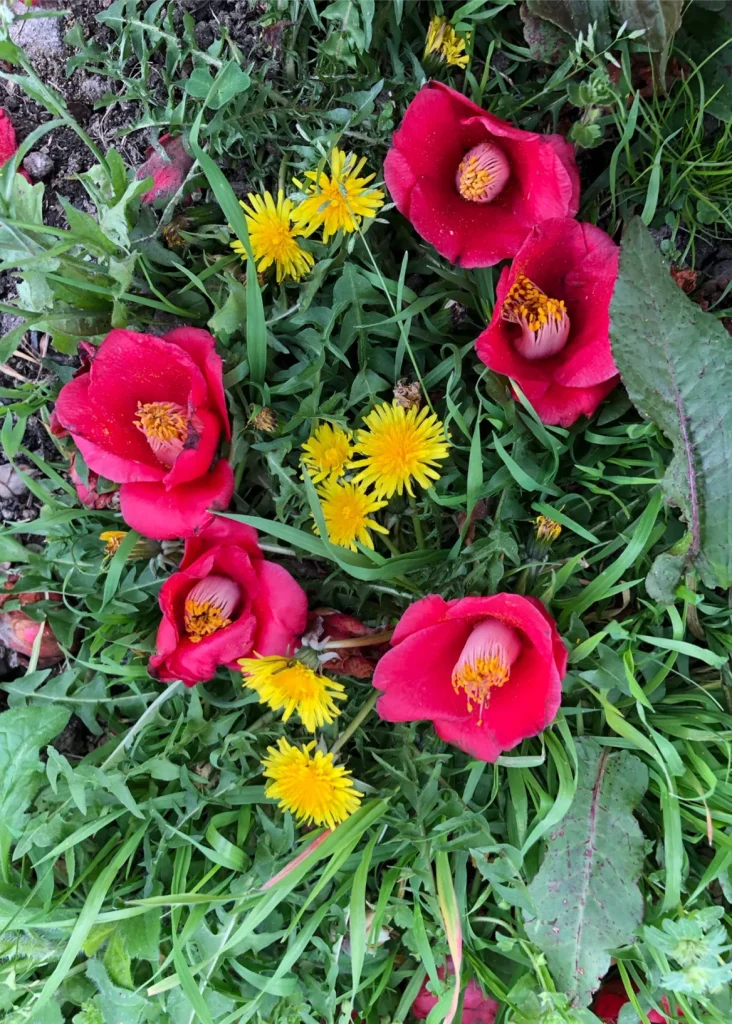
椿(Tsubaki, Camellia) is a flower that represents spring, as you can see from the Chinese characters that combine 木(tree) and 春(spring). Since the time of the Manyoshu, it has been sung by songs and has been loved by Japanese people. The crimson flowers bloom in the thick, glossy leaves, and instead of the petals falling, the whole flower falls, so there is also the word “Ochi-Tsubaki (falling camellia)”. The most common Yabu-Tsubaki (camellia japonica) is a native species endemic to Japan, which grows naturally in coastal areas and mountains throughout Japan except Hokkaido. Some varieties of camellia bloom almost all year round, but in haiku it is used as the “Kigo (seasonal word) for spring (Sanshun, three spring)”. Sanshun is early spring, middle spring, and late spring, and it will be “January-April” according to the current time. It is said that there are about 5,000 camellia varieties in the world, and there are more than 2,000 camellia varieties in Japan alone. Tsubaki was shipped overseas from Dejima in Nagasaki as “Edo camellia” during the closed-door policy period in Edo era. The gorgeous flowers are acclaimed in Europe, and the famous British landscape gardener, John Claudis Loudon said, “In the winter when there are few flowers, the flowers have a presence like roses.” It seems that he praised him. Not only are the flowers beautiful, but the durable camellia that grows well in the sun and in the shade has become widespread in the United Kingdom and Europe and the United States.
椿は、漢字を見れば分かる通り、春を代表する花です。万葉集の頃から歌にも詠まれ日本人に親しまれてきました。つやつやした肉厚の葉の中に真紅の花を咲かせ、花びらが散るのではなく、花ひとつが丸ごと落ちるので「落椿」という言葉もあります。椿の中で最もよく見られるヤブツバキは日本固有の在来種で、北海道を除く日本各地の沿海地や山地に自生しています。椿はほぼ一年中何かの品種が咲いていますが、俳句では「春(三春)の季語」として使われます。三春とは初春・仲春・晩春のことで、今の時期に合わせると「1月〜4月頃」になります。椿の種類は世界に約5000種あるといわれていて、日本国内だけでも2,000種以上の椿の品種が存在します。椿は鎖国時代に「江戸ツバキ」として長崎の出島から海外にも運び出されました。その華やかな花の様子はヨーロッパでも絶賛され、イギリスの著名な造園家、ジョン・クラウディス・ラウドンは、「花の少ない冬季に、まるでバラのような存在感のある花を咲かせる」と椿を褒めちぎったそうです。花が美しいだけでなく、日なたでも日陰でも元気に育つ丈夫な椿は、イギリスをはじめ欧米にも広く普及しました。
